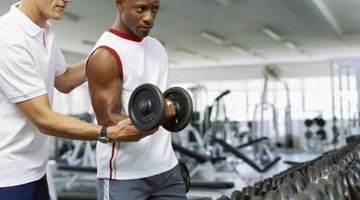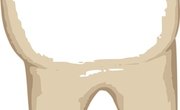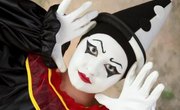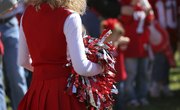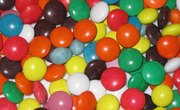The muscular system is comprised of three different kinds of muscles: cardiac, skeletal and smooth. These muscles affect every part of the body, from moving fingers and blinking eyes, to breathing and keeping the heart beating. To help students understand this essential body system, teachers can lead students through a variety of creative projects and activities.
Observing Muscle Types
Obtain slides of the three types of muscles: cardiac, skeletal and smooth. Place students in groups of two or three and give each group a microscope and a slide of each type of muscle. Have students look at each muscle type and create a chart of the characteristics of each type of muscle. This activity is most appropriate for middle and high school students.

Using Your Muscles
Elementary students will enjoy using their different muscles in this activity. Create three stations around the room to represent the three types of muscles.
At the first station, place pieces of bread. Have each student eat a piece of bread and write down how the bread feels going down their throat and into their stomach. This represents the smooth muscle system.
At the second station, give each student a clothespin to represent the skeletal muscles and have them squeeze the clothespin as many times as possible in two minutes. Then have them rest for a minute and try again. Students will notice they cannot flex the clothespin as many times the second time around and will use their knowledge of the skeletal muscles to explain why.
At the third station, have each student feel her heart for 15 seconds and notice the rhythm, then jump back and forth over a line placed on the floor for 45 seconds. After jumping, have her feel her heart again. Students will notice their cardiac muscles working and explain the effect of activity on the cardiac muscles by writing down any changes they noticed in their heart's rhythm.

Muscle Size vs. Strength
For middle school or high school students, pair students up and have them measure and record the size of each other's biceps. Then have each student take turns lifting a milk jug full of water as many times as he can until it is physically impossible to do so. Record the number of lifts each student was able to do. Compare each pair's results with the rest of the class and determine whether those with larger biceps were able to do more lifts.

Design an Exercise Program
Using their knowledge of the muscular system, have students work in pairs to design an exercise program that includes strength, flexibility and endurance exercises. As part of their program, they should write an explanation for each activity. Have students trade exercise programs with another group, follow the group's program for a week and write a reflection on how it helped or didn't help their muscles. This activity is most appropriate for high school students, especially athletes who are aware of different types of exercises and their effects on the body.

Making Faces
Give each student a small, hand-held mirror. Have the student make a face in the mirror. On a piece of paper, the student should create a picture of that face, then draw and label the muscles used to make that face. Another option is to take pictures of students, give each a copy of their picture and have them draw in and label the muscles used to make the expression in the picture. Elementary school students will enjoy making creative faces.

Related Articles
References
Writer Bio
Stacy Zeiger began writing in 2000 for "Suburban News Publication" in Ohio and has expanded to teaching writing as an eighth grade English teacher. Zeiger completed creative writing course work at Miami University and holds a B.A. in English and a M.Ed. in secondary education from Ohio State.

